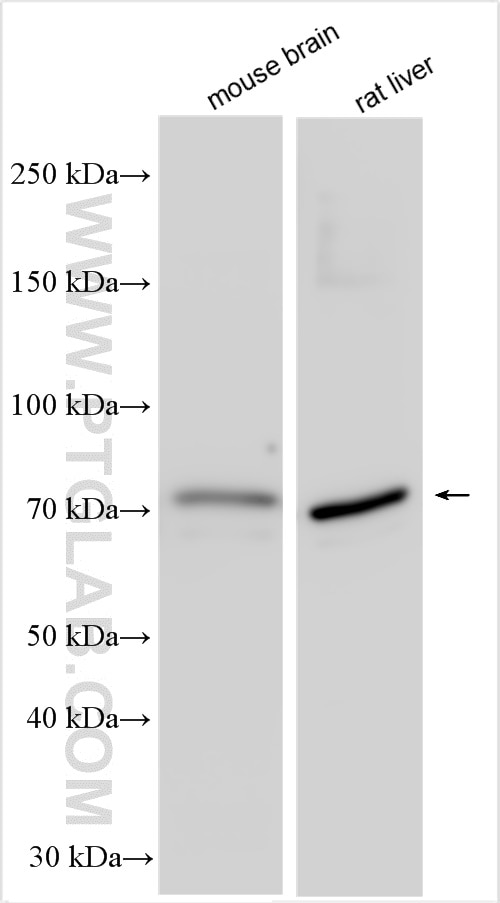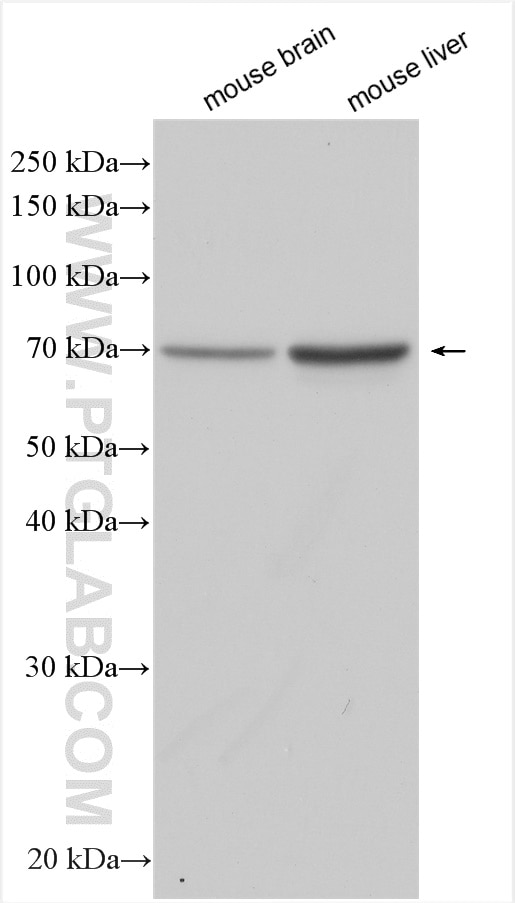NUP85 Polyclonal antibody
NUP85 Polyclonal Antibody for WB, ELISA
Host / Isotype
Rabbit / IgG
Reactivity
Human, mouse, rat
Applications
WB, ELISA
Conjugate
Unconjugated
Cat no : 30158-1-AP
Synonyms
Validation Data Gallery
Tested Applications
| Positive WB detected in | mouse brain tissue, mouse liver tissue, rat liver tissue |
Recommended dilution
| Application | Dilution |
|---|---|
| Western Blot (WB) | WB : 1:500-1:2000 |
| It is recommended that this reagent should be titrated in each testing system to obtain optimal results. | |
| Sample-dependent, Check data in validation data gallery. | |
Product Information
30158-1-AP targets NUP85 in WB, ELISA applications and shows reactivity with Human, mouse, rat samples.
| Tested Reactivity | Human, mouse, rat |
| Host / Isotype | Rabbit / IgG |
| Class | Polyclonal |
| Type | Antibody |
| Immunogen | NUP85 fusion protein Ag33004 |
| Full Name | nucleoporin 85kDa |
| Calculated Molecular Weight | 75 kDa |
| Observed Molecular Weight | 70 kDa |
| GenBank Accession Number | BC000697 |
| Gene Symbol | NUP85 |
| Gene ID (NCBI) | 79902 |
| Conjugate | Unconjugated |
| Form | Liquid |
| Purification Method | Antigen affinity purification |
| Storage Buffer | PBS with 0.02% sodium azide and 50% glycerol pH 7.3. |
| Storage Conditions | Store at -20°C. Stable for one year after shipment. Aliquoting is unnecessary for -20oC storage. 20ul sizes contain 0.1% BSA. |
Background Information
Nucleoporin 85 (Nup85) (also known as FROUNT) is a protein that in humans is encoded by the NUP85 gene. This gene encodes a protein component of the Nup107-160 subunit of the nuclear pore complex. Nuclear pore complexes are embedded in the nuclear envelope and promote bidirectional transport of macromolecules between the cytoplasm and nucleus. The encoded protein can also bind to the C-terminus of chemokine (C-C motif) receptor 2 (CCR2) and promote chemotaxis of monocytes, thereby participating in the inflammatory response.
Protocols
| Product Specific Protocols | |
|---|---|
| WB protocol for NUP85 antibody 30158-1-AP | Download protocol |
| Standard Protocols | |
|---|---|
| Click here to view our Standard Protocols |



